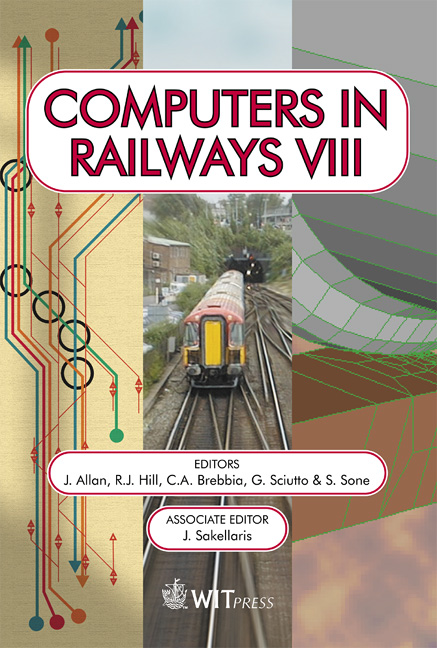Network Control For Improved Performance - A New Method For On-line Scheduling And Dispatching
Price
Free (open access)
Transaction
Volume
61
Pages
10
Published
2002
Size
415 kb
Paper DOI
10.2495/CR020931
Copyright
WIT Press
Author(s)
F Makkinga & L Zigterman
Abstract
Over the last decade, the number of trains has increased to meet the required transport capacity. Today, an average of 6000 trains per day must be managed by Netherlands Railways. The result is highly intensive usage of the infrastructure. Relatively minor disruptions can lead to major distortions, if not handled appropriately. To manage this volume of train traffic effectively, and to maintain the (demanded) quality in terms of reliability and punctuality, the route-setting process has altered. We have seen a shift from dispatching routes manually, on the basis of a timetable, towards automatic route setting using an up-to-date route setting plan. With the assistance of the automatic conflict detection and decision support systems, this route setting plan can be kept up-to- date and free from conflicts. All potential conflicts are handled centrally by the train dispatcher. To fulfil the required transport capacity for the next decade, a new concept in train management is required. This new concept is known as Network Control. The effect which can be achieved with Network Control is handling larger numbers of trains whilst at the same time increasing performance. The route setting process will then shift from automatic route setting towards route management. Network Control distinguishes four layers and a generic architecture for each layer. This architecture forms the basis for the distributed handling of potential conflicts and resolution.
Keywords





